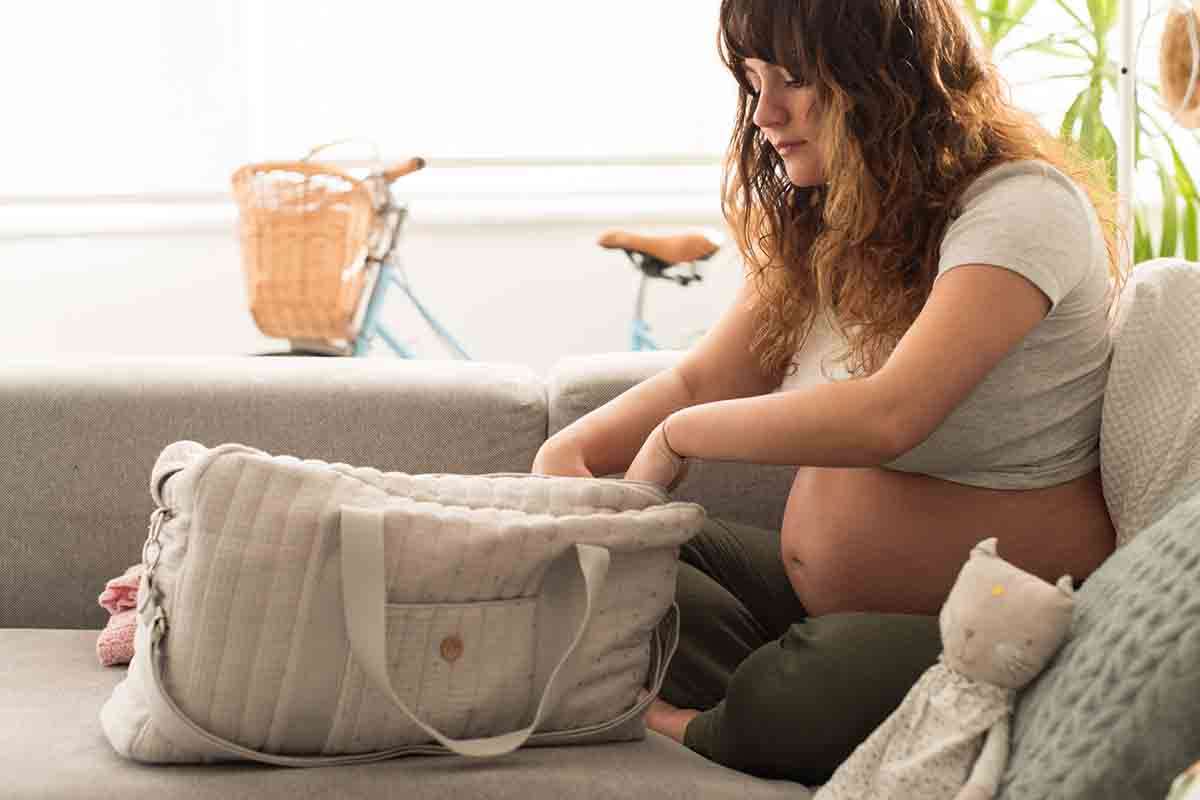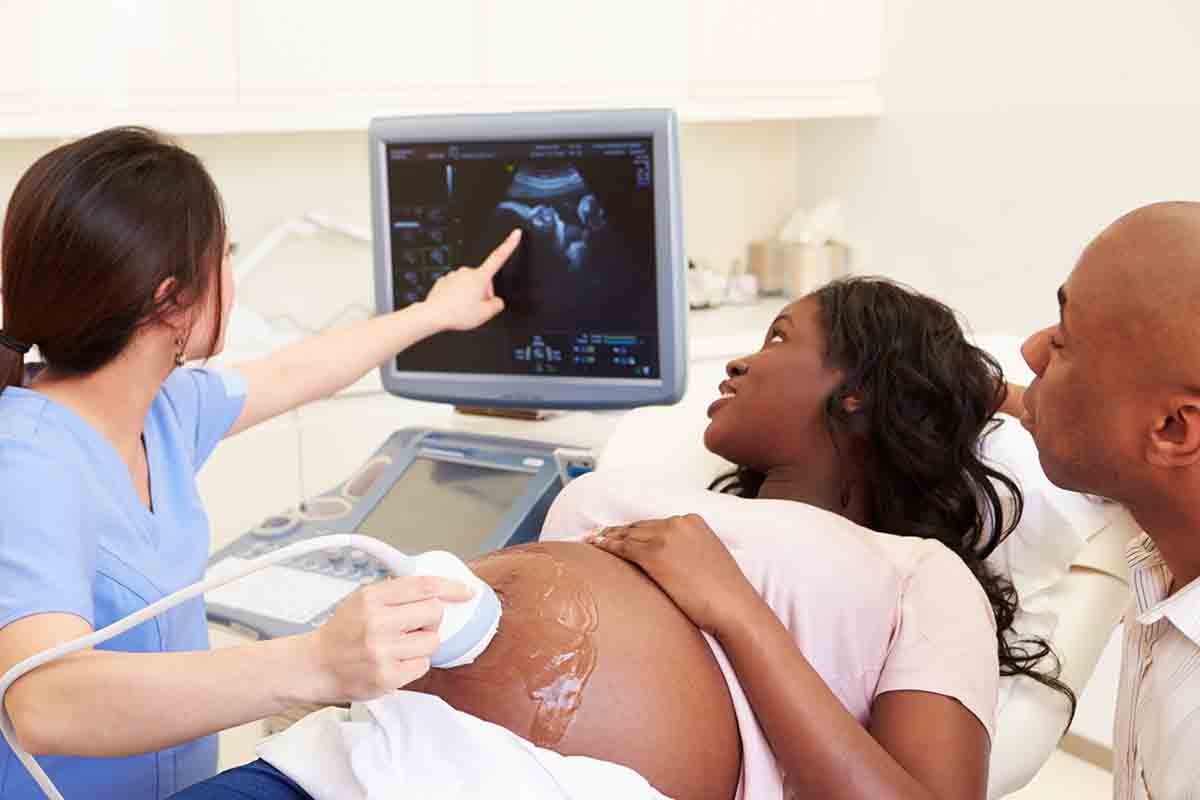When You Should go to the Hospital for Labor: the Complete Guide

In this article, you will find:
Fake vs. real contractions
As your pregnancy reaches its end and your due date is looming, you probably have a lot of questions about when you should head to the hospital once labor begins. Of course, each woman's citation is unique, and your Ob-Gyn may have some specific instructions, but there are a few cut and dry citations doctors say require a call to your physician and perhaps a visit to the delivery ward.
More: What are the Stages of Labor?
Early Labor Signs
Early labor can last anywhere from hours to days in some cases. Most hospitals will not admit pregnant women during early labor unless they are considered high risk, so you will likely have to tough it out at home with your partner or close loved one.
During early labor, you will experience contractions, but they will be more than 5 minutes apart. Unlike Braxton Hicks contractions, these contractions will often happen regularly but will not intensify yet. Instead, these early, less intense contractions soften and shorten your cervix and begin dilation.
During early labor, you might notice a pinkish/brownish vaginal discharge called a mucus plug. This is the plug that blocked the cervical opening. The mucus plug means labor is imminent, but it could still be several days away.
If it is your first baby, early labor tends to take longer than subsequent pregnancies (but not always!)
Ways to Relax During Early Labor
- Enjoy a warm bath
- Go for a walk
- Bounce on an exercise ball
- Relax and listen to music
- Try meditating or breathing exercises
Active Labor Signs

There are two types of contractions, Braxton Hicks contractions, also called practice contractions and labor contractions. Braxton Hicks contractions produce pressure and may be uncomfortable, but there is no pain associated with them. However, active labor contractions will cause your abdomen to tighten, and you may feel abdominal or back pain or a cramping sensation.
If your contractions are happening at a regular, rhythmic rate, that rate increases, and the pain intensifies, then that is one of the most unmistakable signs of labor. Doctors like to use the 5-1-1 formula to determine labor is real. This means your contractions are roughly 5 minutes apart, lasting 1 minute apiece, and have been going on for 1 hour or more.
5-1-1 Contraction Rule
- 5 minutes apart
- 1 minute in duration
- 1 hour or more
If you are experiencing the 5-1-1 contraction rule, give your doctor a call and head to the hospital!
Other signs of active labor include:
- A trickle or gush of fluid from your vagina (your water breaking)
- Brown or reddish discharge
- Pressure in your lower abdomen
Call your healthcare provider if you notice any of these symptoms:
- Bleeding from the vagina
- Leaking fluid
- A change in your baby’s movement (if you’ve felt less than ten movements in 2 hours)
- Regular contractions before your 37th week
The Last 4 Weeks of Pregnancy

In the final four (or five) weeks of your pregnancy, you will likely visit your obstetrician every week until your delivery. Some women plan and opt for a cesarean, while others may plan an inducement if the baby is late. Most doctors will not schedule either before 40 weeks unless you are in a high-risk pregnancy. Here’s what to expect during these final four or five visits.
Week 36 Pregnancy Checkup
At your 36 week check-up, your doctor will:
- Check your weight and blood pressure to check for signs of preeclampsia
- Measure the fundal height of your uterus
- Check your baby’s heart rate
- Ask for a urine sample
Your doctor may discuss:
- Discuss the signs and stages of labor
- Limiting travel no more than an hour from home
- Discuss what to do if you have signs of preterm labor
- Answer questions you have about breastfeeding, an epidural, or other options for pain relief, and prepping for your hospital stay
Week 37 Pregnancy Checkup
At your 37 week checkup, your doctor will:
- Check your weight and blood pressure to check for signs of preeclampsia
- Measure the fundal height of your uterus
- Check your baby’s heart rate
- Ask for a urine sample
- Check the baby’s position; at this stage, the baby’s head may be facing down. Your doctor may also try to turn your baby’s face down if they are not there yet.
Preparations you should make:
- Pre Register at the hospital or birthing center and plan your route(s)
Pack your hospital bag if you have not done so yet
Ask your doctor any questions you have about the early stages of labor or how to tell false labor from actual labor
Week 38 and Week 39 Pregnancy Checkup
At your 38 and Week 39 week checkups, your doctor will:
- Check your weight and blood pressure to check for signs of preeclampsia
- Measure the fundal height of your uterus. If your baby measures large, they may suggest induction
- Check your baby’s heart rate
- Ask for a urine sample
- Check the baby’s position
Your doctor may:
- Check your cervix for signs of dilation
- Ask if you’d like a membrane sweep which can sometimes induce labor
- May discuss plans for induction if your baby is late.
Week 40 Pregnancy Checkup
At your 40 week checkup, your doctor will:
- Check your weight and blood pressure to check for signs of preeclampsia
- Measure the fundal height of your uterus. If your baby measures large, they may suggest induction
- Check your baby’s heart rate
- Ask for a urine sample
- Check the baby’s position and ask about their movements
Your doctor may:
- Check your cervix for signs of dilation
- Ask if you’d like a membrane sweep which can sometimes induce labor
- Likely schedule an induction date
- Remind you to have your car seat installed
- Answer any questions you may have!
When to Go to the Emergency Room During Labor
Most healthy pregnancies culminate in a standard delivery room suite and a successful vaginal or cesarean delivery. However, you should be aware of situations that prompt a visit to the emergency room while pregnant.
Preeclampsia
Preeclampsia is a dangerous condition during which the mother’s blood pressure spikes and requires immediate medical care. Signs of preeclampsia are:
- Severe headaches
- Nausea or vomiting
- Abdominal pain and shoulder pain
- Lower back pain
- Sudden weight gain of 3-5 pounds in a week
- Changes in vision
- High blood pressure
- Shortness of breath
Decrease in Fetal Movement
Once you move out of your first trimester, you’ll begin to notice your baby moving. By the third trimester, they will have developed a somewhat predictable schedule. Call your doctor or head to the hospital if:
- If you notice your baby hasn’t moved in the last two hours or you’ve felt less than ten movements in the last two hours.
Vaginal Bleeding or a Gush of Fluid
Most women will notice some light spotting at the beginning of pregnancy. They may notice some vaginal discharge as their pregnancy progresses, but you should contact your obstetrics office or head to the hospital any time there is bright, red blood.
If you notice it feels like you’ve peed your pants, or you feel a large gush of water, your amniotic sac may have broken. For example, I woke up the day my son was born, and my bed was wet! My water broke while I was sleeping, and I had no idea. So I called my doctor; they brought me in immediately for a visit, confirmed that the sac was indeed broken, and sent me on my way to the hospital!
At any point during your pregnancy you feel unsure about a symptom or have questions, even postpartum, give your gynecologist or ob a call! There are no questions or concerns that are too silly or too small when it comes to your and your baby’s health. If you are looking for more ideas on what to expect and how to prepare for your trip to the hospital, check out Pregnancy: When to Go to the Hospital.

